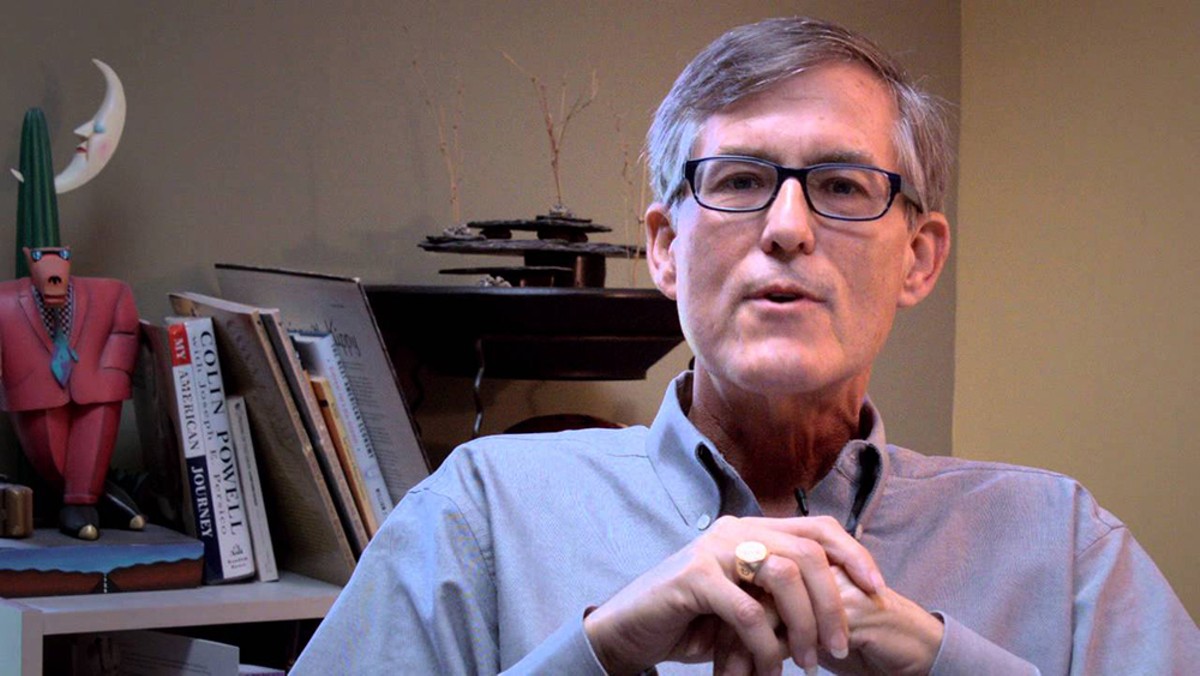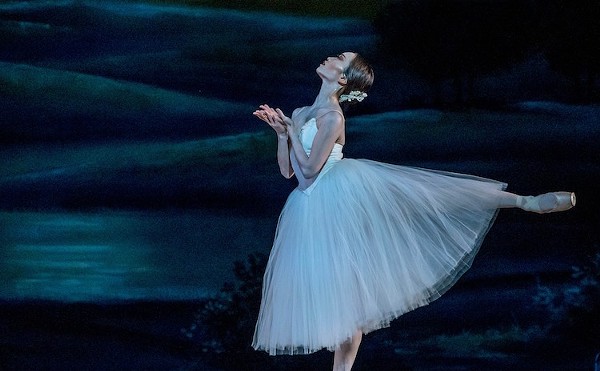Oct. 21, 2015, came and went last week, and the glaring absence of flying cars in our day-to-day lives didn't prevent the global media from going gaga over Back to the Future. Everyone from USA Today and Nike and Toyota to our very own Orlando Museum of Art launched campaigns capitalizing on the moment when Michael J. Fox and Christopher Lloyd arrived in the distant year of 2015, but celebrations at Universal Studios Florida – former home to the franchise's thrill ride – were surprisingly subtle.
Doc Brown (as embodied by actor Chris Prueitt) emceed the morning brass-band sets and was mobbed during his daily meet-and-greets, with scores of guests waiting up to an hour for his 4:29 p.m. appearance. A ceremony to mark the moment with some pyro would have been appreciated by the fans; even so, they sold out the park's supply of ceremonial T-shirts.
It's fitting that, before snapping my selfie with Doc and his DeLorean, I spent Back to the Future Day with two real-life mad scientists (in the best sense) who have been to the past, seen the future and returned to tell us that "something's got to be done about [our] kids."
Bob Allen came to the Orlando Museum of Art's lunchtime lecture Art Sandwiched In to deliver a warning: The cyborgs are coming. He's glimpsed a world where human-electronic hybrids who only care about their own needs, who suffer from crippling time poverty and crave ever-more-intense experiences, are pounding at the doors of our cultural institutions. No, Allen isn't a post-apocalyptic novelist; he's an ex-Imagineer and Chief Storytelling Officer of IDEAS, concept designers of attractions worldwide. And the hordes he speaks of aren't some zombie menace, but the next generation of arts patrons that museums and theaters had better start appealing to.
Allen's clients include Universal and Disney, OSC and MOSI, NASA and the Navy. But even without a billion-dollar budget, his observations can apply to any kind of show, event or classroom: Don't begin with a particular tool or cool toy in mind; start instead by understanding your specific audience and defining your objectives. The human brain has evolved to respond to stories, not bullet points, so give your presentation character, action, emotion and a unique voice to make it personally relevant. A good story creates a feedback loop with the listener that is more immersive than any Oculus Rift, and an engaging docent is the best interactive system ever developed.
For someone who started designing multimedia spectacles for Disneyland in the 1970s and helped create iconic attractions like Epcot's American Adventure, it's surprising to hear Allen declare technology the least important element of good storytelling and preach resistance against the rush to make everything kinetic. He's also refreshingly un-Disney in his frankness, whether dissing a Wall Street Journal article about the "museum of the future" as "totally off-base" or lamenting the practice in China of pouring foundations before deciding the building's purpose. But despite the rush toward a brave new wired world, he's optimistic that human imagination will never be obsolete, saying, "The best simulator, best ride system, best theater in the world is about five millimeters behind your eyes."
Dr. Robert F. Stonerock Jr. passed away Oct. 10, but as the family and friends who filled Rollins College's Knowles Memorial Chapel last Wednesday can testify, his influence on Central Florida will be felt far into the future. Stonerock's memorial was conducted in the same hall where he and actress Marty Stonerock were married by director-performer Peg O'Keef. The service touched on his rich life and diverse interests: from Boone High student and Eagle Scout to research physician and caring clinician; from doting father and supportive husband to arts enthusiast and environmental pioneer. O'Keef read Mrs. Stonerock's remembrances, and director Leander Suleiman recited Chelsea Stonerock's final letter to her father, followed by eulogies from close colleagues (including Mad Cow Theatre's Mitzi Maxwell) and a final farewell written by Bob and delivered by Rus Blackwell.
Stonerock was a board member of Mad Cow Theatre, where Marty has performed numerous times, and his support helped build their new Church Street home, where one of the stages bears his name. His commitment to the company was truly hands-on: He built the cow lobby display and placed thermometers to cut the air-conditioning bill.
His other great passions were the Messiah Choral Society, of which he was a cornerstone member, and clean energy. An avid advocate of recycling and renewables, Stonerock was the first in our area to not only generate enough solar electricity to power his home, but sell a surplus back to the utility. We may not have hoverboards, but Bob's "tower of power" backyard solar panel array is proof positive of Doc Brown's prophecy: The future is whatever you make it.

















